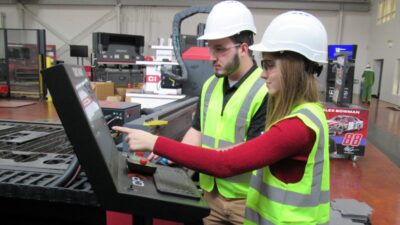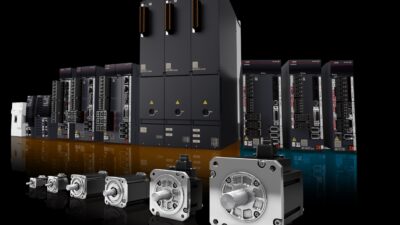Before Ethernet gets to the plant floor, there are seven critical things to know. Here, the Profinet protocol provides the example. 1. Network layout. Do not to take office topologies to the plant floor, but implement plant/machine topologies with Ethernet. Office Ethernet infrastructures are typically based on commercial-grade products meant to be located in a temperature controlled environme...
Before Ethernet gets to the plant floor, there are seven critical things to know. Here, the Profinet protocol provides the example.
1. Network layout. Do not to take office topologies to the plant floor, but implement plant/machine topologies with Ethernet. Office Ethernet infrastructures are typically based on commercial-grade products meant to be located in a temperature controlled environment, and switches designed around a large star topology. Industrial Ethernet architectures, on the other hand, take into account different conditions and additional feature requirements, such as high-speed redundancy. An industrial network utilizes different topologies (star, ring, tree, line), as well as shielded cables, metal connectors and devices with higher temperature and vibration specifications. Furthermore, the switches are designed to be configured and maintained by the same individuals supporting the automation system.
2. Protocols. The critical thing to know about Ethernet is that it’s just the wire. You need an industrial protocol to run automation applications. IEEE 802.3 Ethernet Standard defines the wiring, the media access rules, and the structure of an Ethernet frame. Although different devices utilizing communications based on this standard can coexist on the same network, the devices must use the same protocol or “communication language.” Profinet is a communication protocol designed for industrial applications, providing the functionality required for distributed I/O, machine to machine connectivity, machine safety and motion control.
3. Throughput. It’s not how fast the network is, but how quickly and predictably the data gets to where it’s needed. Throughput is really the crucial factor. Throughput is defined by the amount of data that can be transferred through a network in a given time period. It is only possible to improve performance of a network by shortening turnaround times in the communication stack. The turnaround times in the Profinet stack are more than 10 times less than a standard Ethernet TCP/UDP implementation. Profinet accomplishes this by taking advantage of an Ethernet real-time channel for time critical applications, while using the standard TCP/IP channel for configuration, diagnostics, network routing and communication of “bulk data transfer.”
4. Network configuration. It’s not just how easy it is to setup, but how little programming you have to do to make it run. When establishing the communication relationships between devices, Profinet focuses on configuration instead of programming. With an object-oriented approach that configures interconnections between devices (rather than a programming / debugging approach), system-integrators and end users confirm a reduction of 25% in engineering and commissioning time.
5. Planning ahead. It’s not only important to support today’s applications. You need the same Ethernet to support all your applications in the future. Profinet allows customers to implement a totally integrated automation solution, at their own pace, on one single Ethernet network that supports different control disciplines, such as peer to-peer communications, distributed I/O, machine safety, motion control, and data acquisition. Profinet is also prepared to handle the future requirements of connectivity.
6. Legacy systems. The critical thing about Industrial Ethernet is not just if it talks Ethernet, but how it integrates with already implemented networks and machines from different vendors. Since Profinet works with standard Ethernet switches and utilizes the TCP/IP protocol suite, a system based on Profinet may be connected to the overall automation network without the requirement of high-end switches or special features such as IGMP snooping and VLAN. Profinet also allows communication between the multiple vendor solutions. Its component-based automation concept uses XML to represent the entire machine as a component, independent of the control system inside.
7. Cost. The critical thing about the cost of an Industrial Ethernet network is not the cost of the components, but the cost of engineering, installation and maintenance. Profinet and Industrial Ethernet components take advantage of IT technologies like OPC and SNMP to monitor and display the status of the network. Furthermore, diagnostic capabilities provide the ability to incorporate the status of the network directly into the automation system, which could include the PLC and SCADA system. This simplifies configuration and troubleshooting by allowing everything to be done from one central location.
ONLINE extraRelated reading from Control Engineering includes: 10 commandments of using Ethernet for control
Who Puts the ‘Industrial’ in Ethernet?
Product Research: Industrial Ethernet Protocols, 2006 December
Author Information
Jeremy Bryant is networking technology specialist with Siemens Energy & Automation, Inc., Norcross, GA. For more information on Profinet, visit



